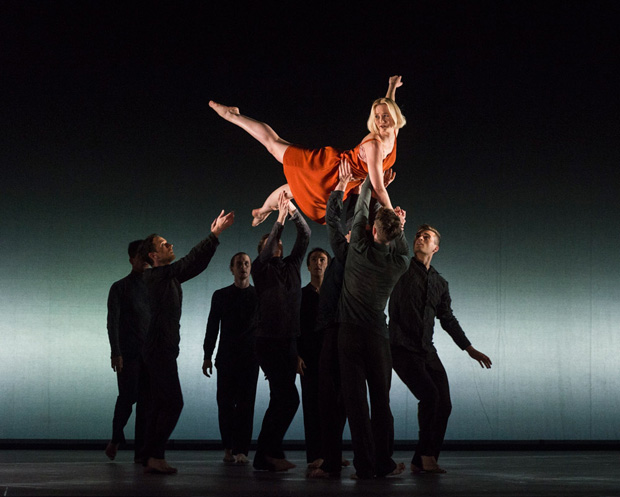
© Foteini Christofilopoulou. (Click image for larger version)
Rambert
Love, Art & Rock ‘n Roll: The 3 Dancers, Transfigured Night
London, Sadler’s Wells
3 November 2015
Gallery of 3 Dancers pictures by Stephen Wright
Gallery of Transfigured Night pictures by Foteini Christofilopoulou
www.rambert.org.uk
www.sadlerswells.com
What is involved in holding hands with someone? The many possibilities and ambiguities are examined in the two London premieres of Rambert’s triple bill: Didy Veldman’s The 3 Dancers and Kim Brandstrup’s Transfigured Night.
Veldman’s commission is based on Picasso’s 1925 painting, The Three Dancers, owned by the Tate Gallery but not currently on display. It’s a tantalising picture with a complicated back story, to which Veldman alludes: you need to read the programme note and see the reproduction in order to pick up the references. Without that information, the elaborately structured choreography looks intriguing but unfathomable.
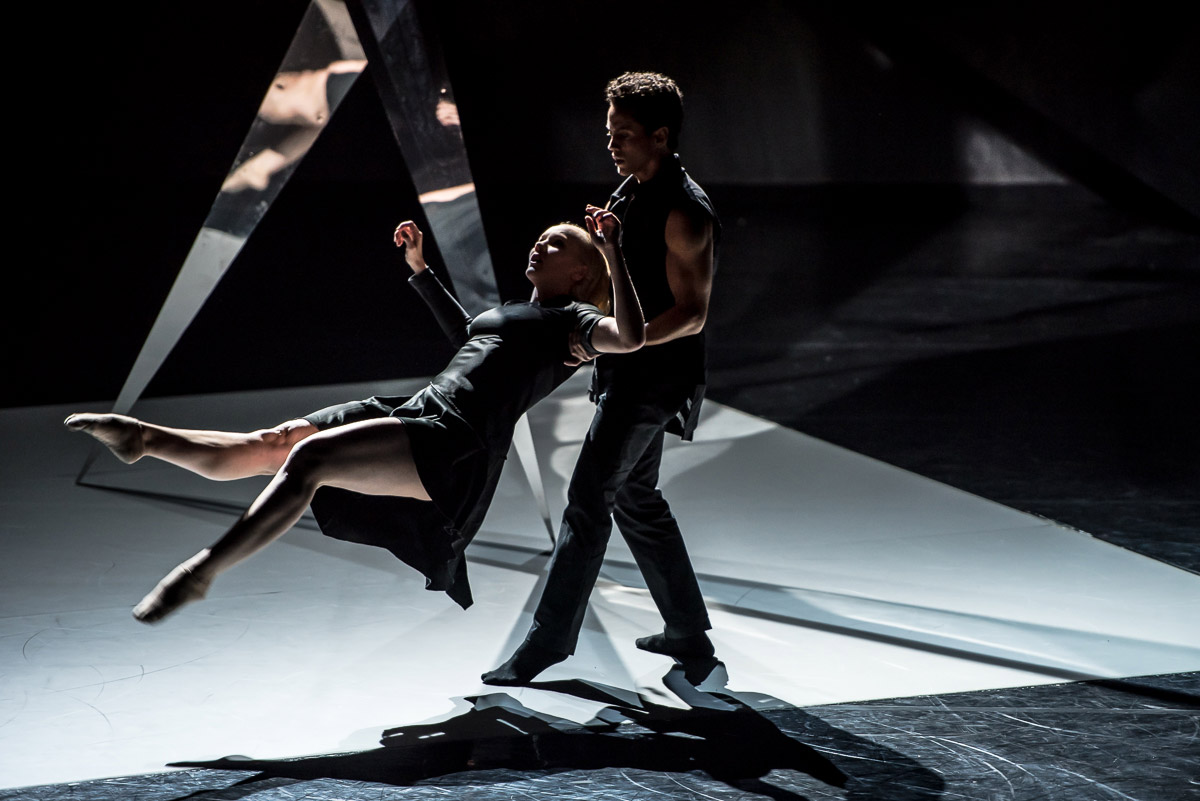
© Stephen Wright. (Click image for larger version)
Picasso started the painting as a depiction of three Ballets Russes dancers rehearsing. Then the death of a painter friend brought back memories of a fatal triangular love affair, resulting in the suicide of one of the lovers. The male central figure, with outflung arms as if crucified, is flanked by a man and a woman, holding hands behind the sufferer’s back. The dancing figures, each with one leg raised, are treated very differently in style, so the painting is partly Cubist, partly Expressionist.
Veldman’s choreography begins simply and grows in complication to suggest the fragmented planes of Cubist art. Three trios, one costumed in white, the other in black, form tableaux in separate squares of light, hands linked. The music, by Australian composer Elena Kats-Chermin, throbs quietly, then builds in orchestration as the trios swap domains and intermingle, sometimes merging, sometimes confronting their alter-egos.
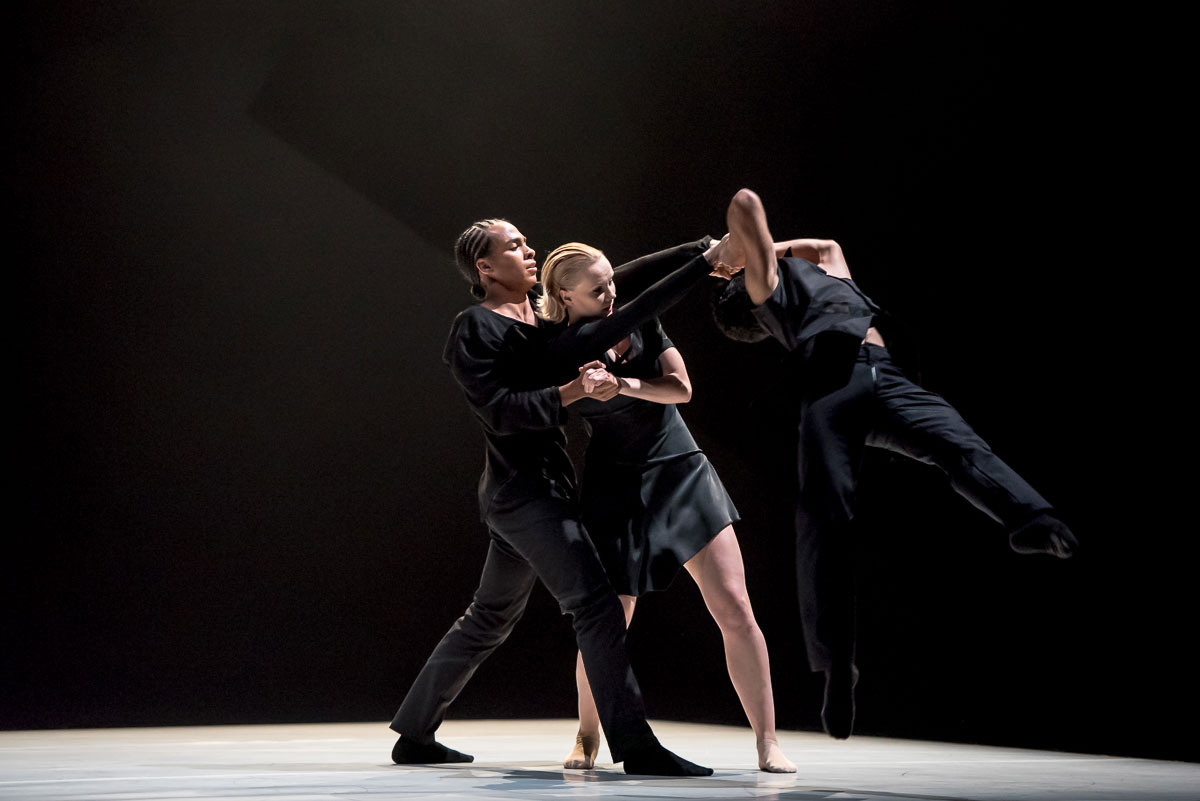
© Stephen Wright. (Click image for larger version)
A mirrored shaft descends to dissect the space, then another and another. (Designs are by Veldman’s frequent collaborator Kimie Nakano) Black-clad Liam Francis manipulates white-clad David Davidson as though he were the vulnerable central figure in the painting, a puppet pierrot. The two women from the trios, Brenda Lee Grech and Simone Damberg Würtz, pass through, uncaring.
They duet together to lighter-hearted music; two men, Dane Hurst and Miguel Altunaga, wrestle fiercely; Altunaga and Grech stretch out for each other longingly. In each combination, where and how hands are held have different implications. By the end, the white and black trios have re-assembled to ominous music. The white three lie down, the black three remain upright, shadows of death.
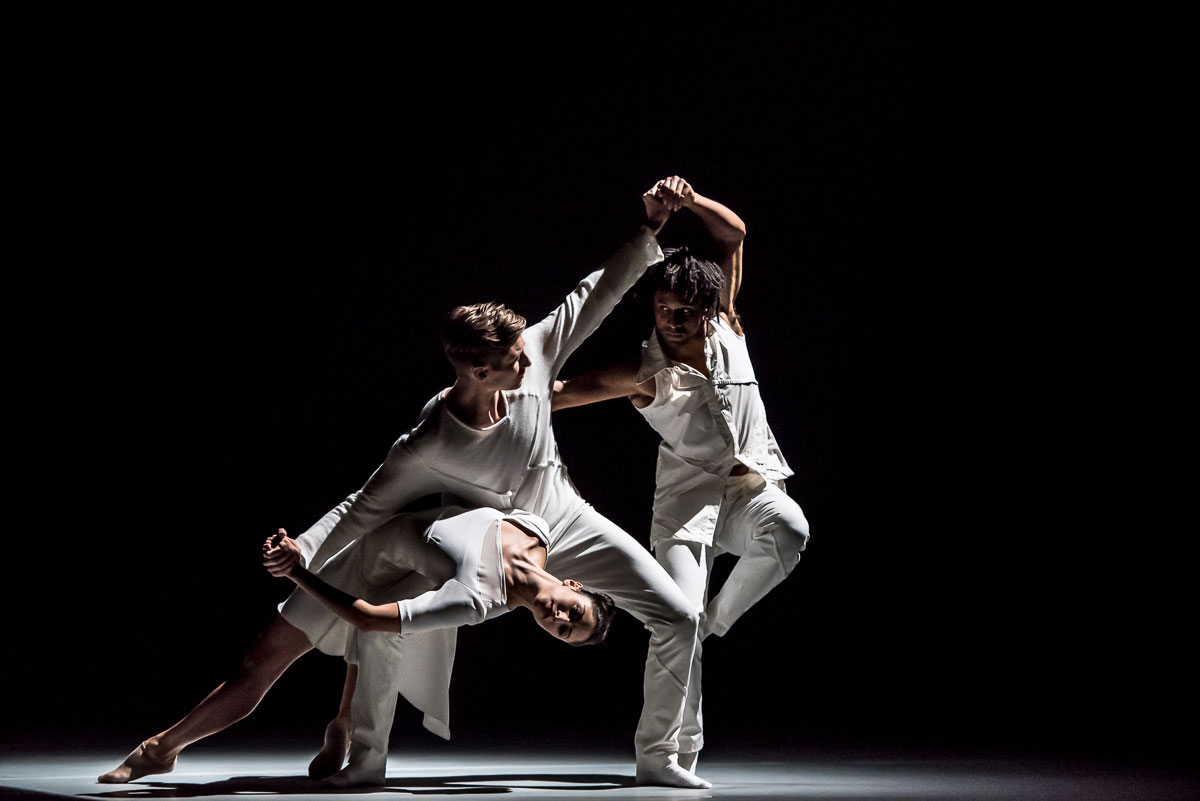
© Stephen Wright. (Click image for larger version)
Though the stark setting with its shafts of light is lovely to look at, the relentless action of the six dancers becomes oppressive. Their congested convolutions, curved rather than angular, bear no relation to the jagged outlines in Picasso’s brutal painting. The turbulent relations within the trios are implied rather than revealed in almost impersonal contemporary dance.
In Brandstrup’s Transfigured Night, an outstretched hand is fraught with meaning. Set to Schoenberg’s programmatic Verklårte Nacht, the piece follows the poem that inspired the music. A woman confesses to her lover that she carries the child of another man she never loved, and begs his forgiveness. When Antony Tudor created his 1942 Pillar of Fire to the same scenario, he provided a social context for the woman’s sexual hunger and shame. Brandstrup focuses instead on the man’s dilemma. Unlike the heroic lover in the poem, it’s by no means certain he can come to terms with her admission.
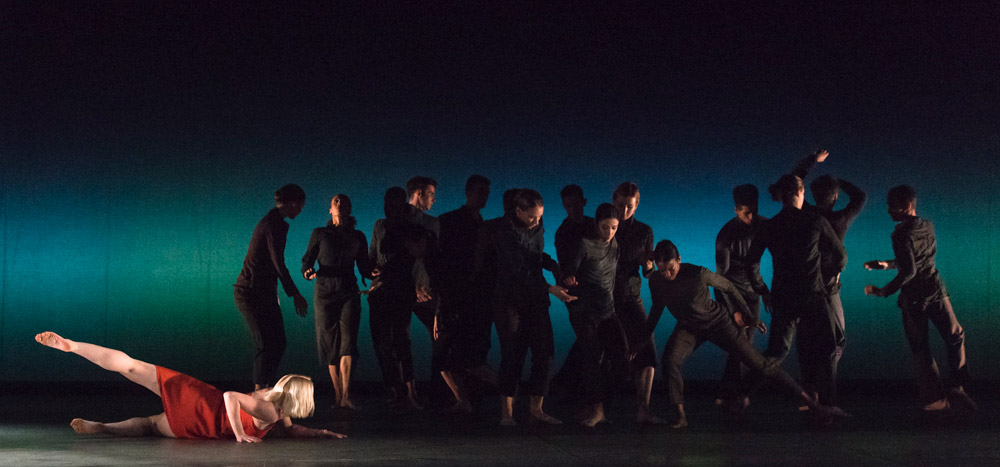
© Foteini Christofilopoulou. (Click image for larger version)
In the first scene, the scarlet woman (Simone Damberg Würtz) repeatedly reaches for her lover (Miguel Altunaga) imploringly. Hers is the urgency in the music, his its angry recalcitrance. Brandstrup has based his imagery on paintings by Egon Schiele of awkward, conflicted couples, eyes glazed with apprehension.

© Foteini Christofilopoulou. (Click image for larger version)
As the music sweetens, the woman is replaced by her alternative self (Hannah Rudd), dressed in innocent white. She dances ecstatically with her eager lover (Dane Hurst), who bounds acrobatically around her. She is flown high with no burden of regret to bring her down. The blissful pair are surrounded by a corps of 16 black-clad dancers who represent the lovers’ internal landscape, as well as the moonlit woods in which the couple wander in the poem. Brandstrup uses the chorus as brushstrokes to echo and amplify their emotions – he is skilled, now, at choreographing massed movement in contrast to piercing duets.

© Foteini Christofilopoulou. (Click image for larger version)
When Würtz returns, it’s clear that reconciliation is not going to be easy. She and Altunaga circle each other around the pole in the centre, the obstacle that comes between them. Their clasps in agonised lifts are like wrestling holds. He makes to leave, but extends his hand behind his back – a childish, heart-wrenching gesture. The music swells in an apotheosis of hope as the woman cradles him in anticipation of the child she will bear.
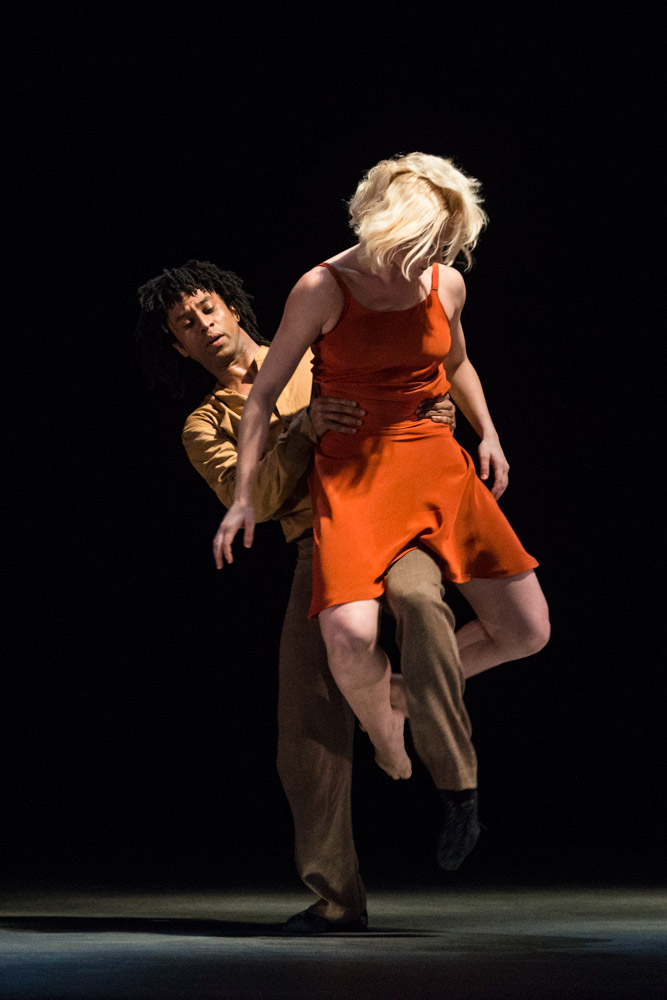
© Foteini Christofilopoulou. (Click image for larger version)
Bittersweet, Brandstrup’s gorgeous piece, one of the finest he has created, proves how effectively he can be romantic without descending into sentimentality. His dancers don’t need to emote: the choreography, which fits Schoenberg’s music as though the score was written for it, reveals everything he wants to convey. Overwhelmed, I left before Christopher Bruce’s Rolling Stones’ Rooster concluded the triple bill. My only regret is that since sensational Dane Hurst will be leaving Rambert after ten years, his every performance needs to be treasured.












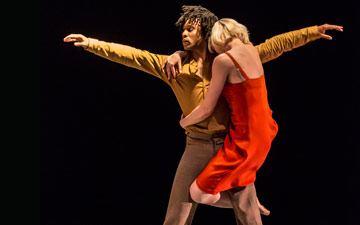



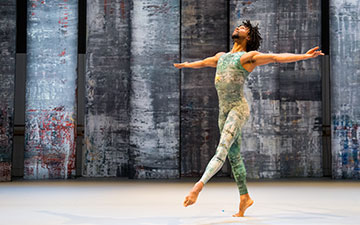
You must be logged in to post a comment.